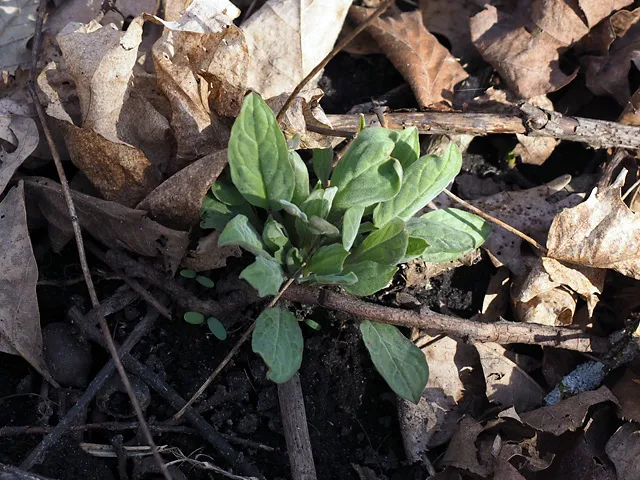The following day, in the great wetland, shrub willows bloom. Although the oaks reserve their enthusiasm, there are buds or blooms on red maples, willows, and basswood.
Colorful catkins decorate the woodland floor.
The earliest and predominant herb is garlic mustard, Alliaria petiolata. Invasive precisely for this reason, getting it's start before the snow has departed, gaining ground in the leafless sunshine of early spring. The woods is an impeccable example of humanity and forest, neither untouched or wholly impaired, unintentionally altered to the benefit of some species over others. Should we remain here, its condition will be the project of my days.
It will be helpful to identify some of the earliest plants, some of which may be detrimental to the spring ephemerals and some that may be the ephemerals. Minnesota shares several native plants with New York, so I am not completely out of my league, however at the earliest stages of growth, identification becomes quite a bit more difficult. This plant, above, is growing in the sunshine, in the garlic patch, in the woods, everywhere! It has blue-green, mildly glaucous leaves and reddened glaucous stem. My first guess is in the direction of buttercup, Ranunculaceae. Does anyone recognize it? Please, comment if you do.
Another early riser, looking more like columbine or possibly a meadow rue, Ranunculaceae?
This looks familiar, but I haven't found a good web source for early growth characteristics, Minnesota woodland plants, etc. etc. Only so much time in a day.
Not garlic mustard, but what?
Ahh, something a different, lanceolate grey-green leaves. Asteraceae?
This grass, throughout the woods but primarily on paths, has been up since early March. Clump forming and flowering now, I'm guessing a sedge, maybe Carex pensylvanica.
Understanding what lies underfoot, what calls over the wetland, what tree is more likely to fall is quite a bit of my task now. Despite having visited here for a dozen years, although mostly in winter, I have yet to witness much of what happens. For this reason I temper my big ideas and ambitious projects, settling instead to witness the changes before me. Time is short, yes, but I keep asking myself if the ideas I do have would be any better than what is already there. So I watch, taking in as much as I can, and see my own ideas transformed in the process.
____________________
Understanding what lies underfoot, what calls over the wetland, what tree is more likely to fall is quite a bit of my task now. Despite having visited here for a dozen years, although mostly in winter, I have yet to witness much of what happens. For this reason I temper my big ideas and ambitious projects, settling instead to witness the changes before me. Time is short, yes, but I keep asking myself if the ideas I do have would be any better than what is already there. So I watch, taking in as much as I can, and see my own ideas transformed in the process.










It's almost as if you were a new babe, experiencing the world around you for the first time. A challenge, but also a delight. I see many photos in your future.
ReplyDelete